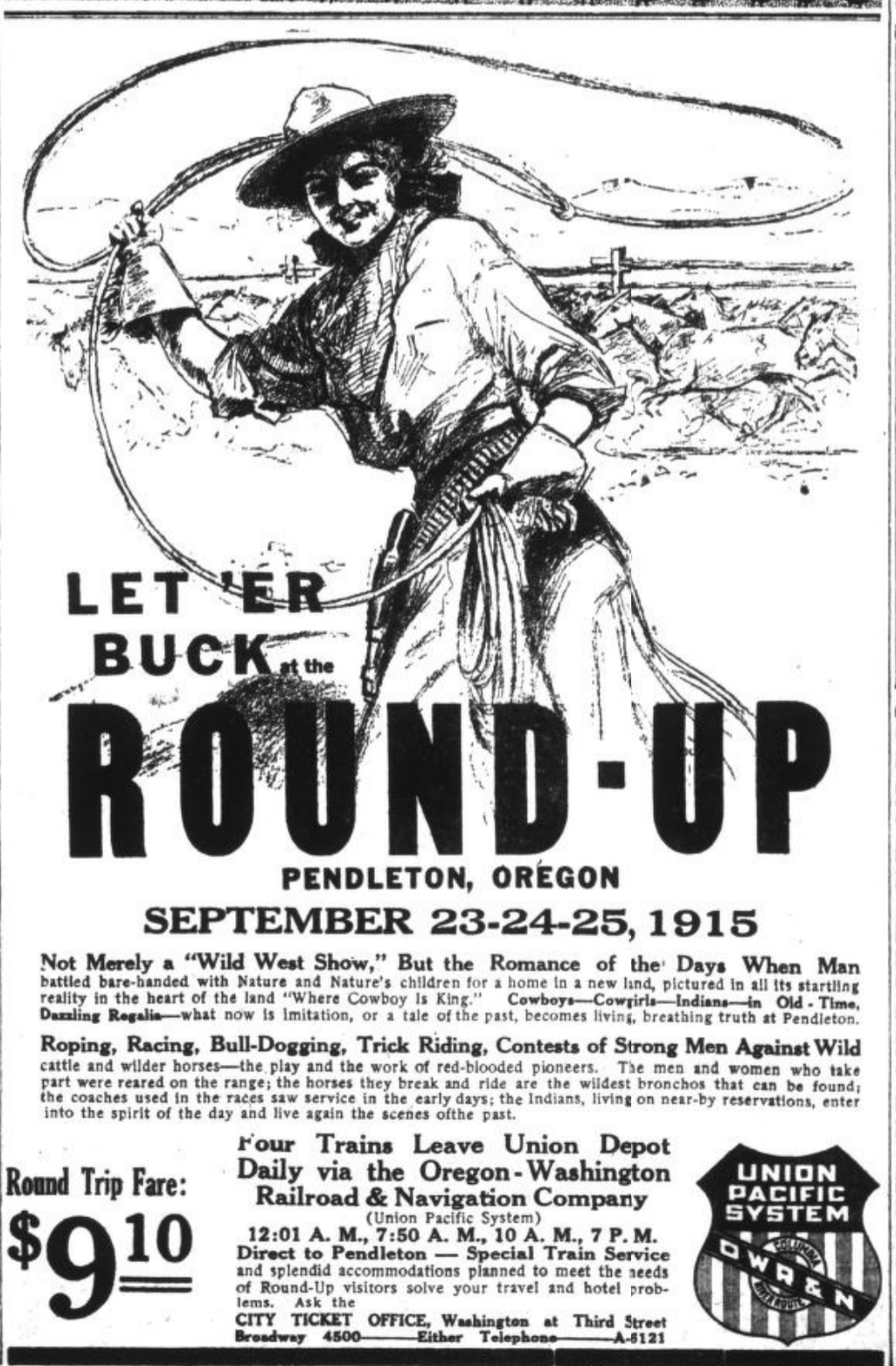The Story of Small-town Rodeo Meets National Fame
How the Annual Pendleton Round-Up became the subject of an American Lifeograph documentary.

The ways theater owners promoted their programs and venues to audiences

For my blog post, I chose an advertisement article about the Savoy theater in Medford that the Medford Mail Tribune published on October 3, 1908. The Savoy was the second moving picture theater built right after the Bijou. It is an interesting article because it was two days after its first opening on October 1 of 1908.
When the Dreamland Theater was first created, like many other theaters at the time, it had to be promoted in the newspaper to attract patrons from all over the town of Albany, Oregon. To gain traction the Dreamland Theater would often gain promotional advertisements in the newspapers telling patrons the price of admission, shows being played, acts offered if any. The promotions would complete this information with the showtimes of the films and the days on which the films would be changed.
The Strand Theater in Portland Oregon was a project owned and operated by S. Morton Cohn, as owner, manager, and director of the theater of both the theater and the Strand Theater company. The theater was a well-to-do, but fairly cheap theater that opened in 1916, it showed various photo villas and Vaudeville era pictures during its operating years.hIn this promotion, we see the Strand promoting 4 of its newest shows as well as grandly making it known that their price for all fims was 10 cents, an affordable price for most families in that time.
The Crescent theater, which operated in Roseburg, Oregon from 1908-1910, was a short-lived theater in Oregon history, although it maintained a high status for their “high class motion pictures”. Since the theater was only around for a short while, information is sparse, however there are bits and pieces of info that I gathered throughout my research that certainly formed an image of what the theater going environment was like at the Crescent.
The Empire Theater in Albany was open during the early 1900s and while the population today has reached over fifty-thousand, the city was much smaller back then. The Empire was also not the only theater open in this area at the time, so in order to ensure they would have steady business, this theater was forced to explore alternative promotional strategies. This included many musical performances.
The Gem Theater
I love the catchy phrases and slogans featured on many theater ads from this time period, as if clever wording will be enough to make someone buy a ticket at that theater over another one with more pedestrian advertisements. Here's a sample of some of my favorites:
IF LAUGHING HURTS YOU STAY AWAY (Bell Theatre, Springfield, Oregon, 1916)
The St. Helens Mist was one of the primary newspaper companies in St. Helens in the early 20th century. After scouring articles that were available through the UO library website, I was able to find many instances of documented male managers and owners of theaters in the city of St.
On Tuesday, October 12, 1909, the Dreamland Theater was under the new management of J.A. Cooper and his brother Ross. In order to establish the theater, make it well known amongst the people again, and also have it live up to its name. The brothers decided to host a large event that would draw people back into the theater and showcase its new found extravagance, while also bringing a piece of Southern California to Salem, Oregon.